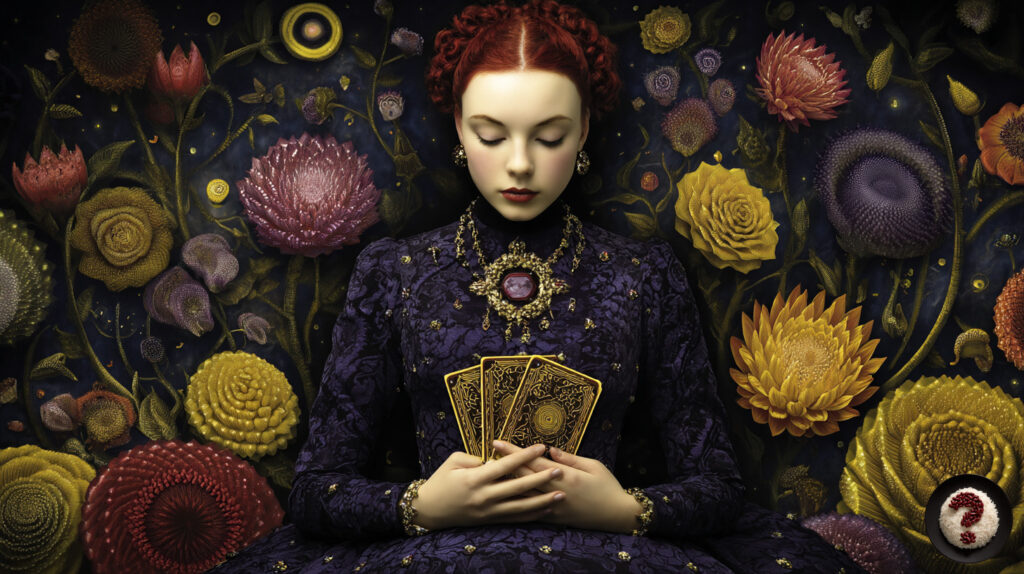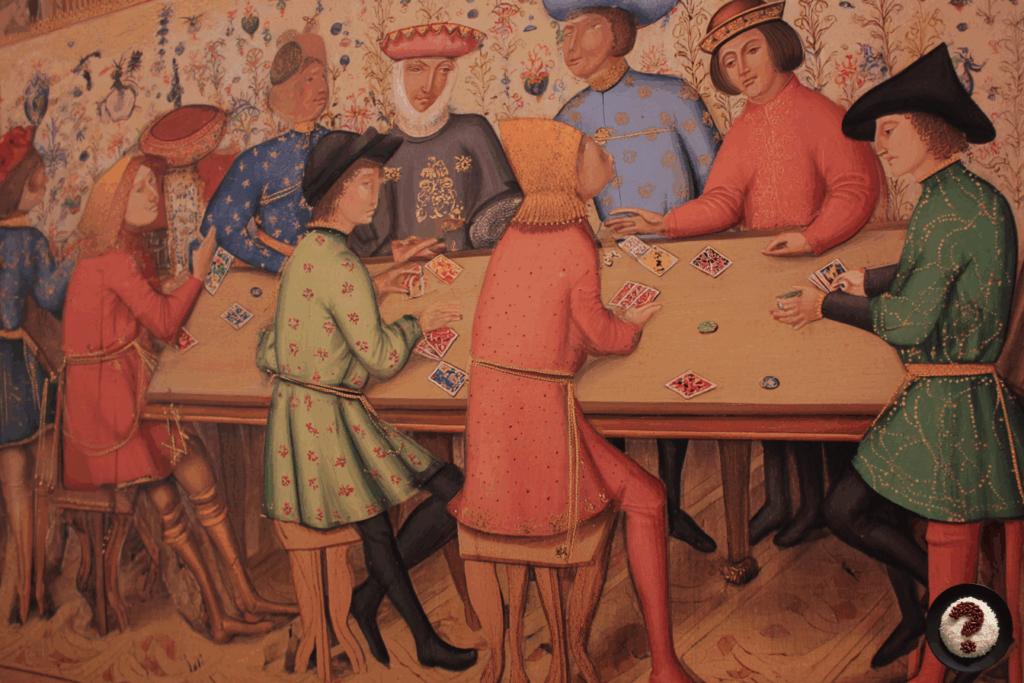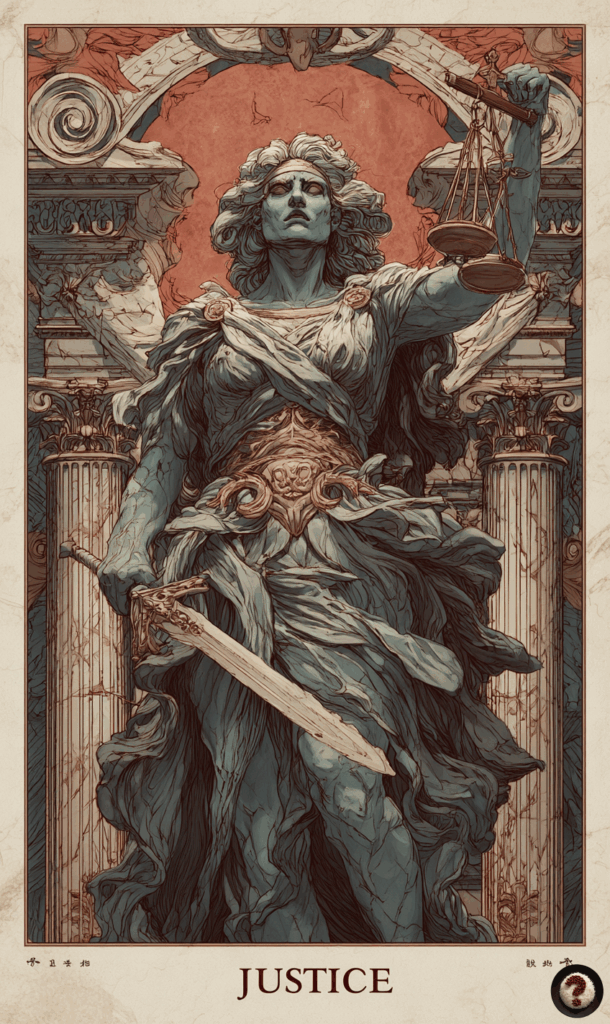
Is Tarot Real, and Does It Have a Connection to Science?
“Do the cards determine your destiny, or do the cards fool you?”
We are a nation that interprets the heart-shaped grounds left in a coffee cup as “I guess love is coming.” A little mystery, a little hope, and a bit of fun… As such, Tarot cards have become quite popular in our country, sometimes taken seriously, and sometimes consumed just for fun with a “I wonder what it will say?” curiosity.
So, what exactly is Tarot? Does it really predict the future? What does science say about this? Or is it all just an “illusion played with cards?” If you’re ready, we are embarking on a journey woven with a bit of history, some humor, and lots of cards!
Tarot: Just Fortune-Telling, or Philosophical?
The first thing that comes to mind for most people when Tarot is mentioned is a fortune-teller opening three cards—”past, present, and future”—then looking into your eyes and saying, “You are expecting news from someone.” But Tarot can actually be much more than that. Tarot is an interesting card system composed of symbols, signs, archetypes, and life cycles. Of course, the part about “learning destiny from the cards” is its most popular dimension.

A Brief History of Tarot Cards
Tarot’s origins date back to the 15th century, to the northern cities of Italy. At that time, Tarot was not the business of the “fortune-telling auntie” as it is today; it was a kind of playing card game played by nobles. This game, called “Tarocchi,”later moved to France and gained a “mystical” aura there. In the 18th century, occultists (minds that shuttle between mystics and science) attributed symbolic meanings to the cards. Since that day, Tarot has no longer been just a game but a “guide to destiny.”
How Many Tarot Cards Are There?
When you pick up a Tarot deck, you usually encounter 78 cards. These are divided into two: the 22 cards of the Major Arcana and the 56 cards of the Minor Arcana. The Major Arcana describes life’s turning points, while the Minor Arcana describes daily events. If one card says, “The universe is testing you,” the other might say, “Your phone battery is dead, be careful.”

The Mysterious Symbols on the Cards
Each Tarot card is decorated with symbols such as stars, moon, sun, balance, death, and lovers. These symbols are also associated with Carl Jung’s psychological theories. According to Jung, these symbols are the collective images of the human subconscious. Therefore, when looking at the cards, “something stirs” within everyone. This is why some view Tarot interpretation as a “psychological mirror.”
So, Does Tarot Really Show the Future?
This is the most crucial question. Do Tarot cards show the future exactly? The answer: Most likely no. Tarot can be seen not as an instrument of prophecy, but as a guide that shows probabilities, emotions, and awareness. The cards suggest that you look in a certain direction, but whether to go there or not is entirely up to you. Even if the card says “love is coming,” if you still dwell on your ex’s Instagram story, the love might remain only on the card.
Tarot and Science: Two Worlds Head-to-Head
The scientific world is quite cautious about Tarot. This is because there is no verifiable data to suggest that Tarot predicts the future. Tarot often works like a placebo effect: if a person believes in something, they start acting accordingly. For example, someone who sees the card “you will soon receive a job offer” attends interviews with confidence, and the result is positive. But this success is the product of the person’s own action, not the card.
Can Tarot Be a Psychological Tool?
Some psychologists say that Tarot can be used as a therapeutic tool rather than as direct “prophecy.” The cards can help people express their inner world and confront thoughts in their subconscious. Some psychotherapists even deepen the session by asking clients, “pick a card, how did it make you feel?” Used correctly, the cards don’t deceive us; they bring us closer to ourselves.
Who Uses Tarot Cards?
It’s not just fortune-tellers or “mystical” types. Today, many people, from artists to therapists, writers, advertisers, and teachers, use Tarot cards as a creativity enhancer or an awareness tool. Some companies even shuffle cards during creative brainstorming sessions. Well, if the idea comes from the card, so be it.
What Does It Take to Be a “Tarot Reader”?
You don’t need a special talent to be a Tarot reader, but knowledge of symbolism, archetypes, and empathy is quite important. In other words, simply memorizing the card meanings isn’t enough; you must be able to ask the right questions and interpret the answers. Furthermore, a good Tarot reader doesn’t direct the person they’re reading for—they only prompt them to reflect.
Does Tarot Mislead?
It can mislead, especially if you take the cards too seriously. Tarot is a guide; it is not the compass of destiny. It is healthier to think, “What am I expecting from this relationship?” instead of saying, “The Two of Cups came out, so Ayşe is in love with me!” Otherwise, our own expectations, not the card, deceive us.
Tarot and Cultural Influences: From Netflix to TikTok
Tarot has become a favorite of popular culture in recent years. Tarot cards appear in magical scenes in series like “The Chilling Adventures of Sabrina” and “The Witcher.” On TikTok, “This message is just for you: Pick a card!” videos circulate every day. So, tarot is no longer just mysterious—it’s become quite mainstream!
Do the Cards Change Destiny?
No. The cards tell you “there is a turn,” but whether to take that path or not is up to you. The beauty of Tarot is in creating personal awareness. When interpreted correctly, it leads a person to an internal discovery, but the decision always belongs to the person consulting the cards, not the one holding them.
Is There a Danger to Tarot?
Tarot itself is harmless, but misinterpreting it or tying all decisions to the cards can be dangerous. Especially during emotionally difficult times, offloading responsibility by saying “whatever the card says” makes a person passive. Tarot can be supportive, but it should never take the wheel of your life.
Tarot is entertainment for some, a tool for insight for others, and a spiritual journey for still others. It is not a scientific method, but it can have some psychological benefits. When used correctly, it can help you get to know yourself, but you will still be the one making the decisions. Remember: The cards are just a mirror. The real reflection is within you.
The List of Tarot Cards
Major Arcana – 22 Cards
| Card | Interpretation |
| The Fool | New beginnings, adventure, innocence, courage |
| The Magician | Creativity, willpower, potential |
| The High Priestess | Intuition, insight, mystery |
| The Empress | Abundance, fertility, nature, compassion |
| The Emperor | Power, authority, order, structure |
| The Hierophant | Tradition, knowledge, teaching |
| The Lovers | Love, choices, harmony |
| The Chariot | Victory, determination, control of direction |
| Strength | Inner strength, patience, courage |
| The Hermit | Introspection, solitude, wisdom |
| Wheel of Fortune | Change, luck, cycles |
| Justice | Balance, fairness, consequences |
| The Hanged Man | Surrender, new perspective |
| Death | Endings, transformation, rebirth |
| Temperance | Harmony, patience, balancing |
| The Devil | Addiction, obsession, ego |
| The Tower | Sudden change, destruction, enlightenment |
| The Star | Hope, healing, inspiration |
| The Moon | Illusions, subconscious, fears |
| The Sun | Happiness, success, childhood |
| Judgement | Evaluation, awakening, decision |
| The World | Completion, success, end of a cycle |
Minor Arcana – 56 Cards
The Minor Arcana is divided into 4 suits: Cups, Wands, Swords, and Pentacles (or Coins).
Cups (Emotions and Relationships)
- Ace: New emotions, beginning of love
- 2-10: Romantic connections, friendship, happiness, or emotional difficulties
- Court Cards: Emotional news, romantic offers, compassionate leaders
Wands (Passion, Energy, Action)
- Ace: Burst of creativity, motivation
- 2-10: Dealing with challenges, growth
- Court Cards: New projects, energetic initiatives, inspiring leaders
Swords (Mind, Decisions, Conflict)
- Ace: New ideas, truth
- 2-10: Indecision, mental pressure, endings
- Court Cards: Curiosity, intelligence, strategic thinkers
Pentacles (Money, Work, Physical World)
- Ace: New financial opportunities
- 2-10: Work life, material stability or losses
- Court Cards: Education, skill development, financial leadership
Things to Note When Interpreting the Cards
- Position matters: The card’s location can affect its meaning (e.g., past, present, future).
- Reversed cards are usually warnings but don’t always mean “bad.”
- Combinations are important. The cards speak to each other.
References:
- Dummett, Michael. The Game of Tarot: From Ferrara to Salt Lake City.
- Jung, Carl Gustav. Man and His Symbols.
- Kaplan, Stuart R. Tarot Encyclopedia.
- The Tarot Association of the British Isles (TABI)
- Psychology Today – “Using Tarot Cards as a Therapeutic Tool”
- BBC Future – “Why Do People Still Believe in Tarot?”
- Scientific American – “The Psychology Behind Why Tarot Works”
